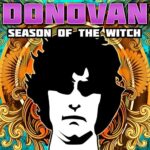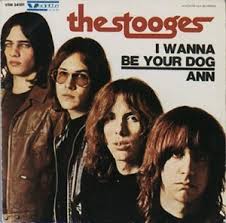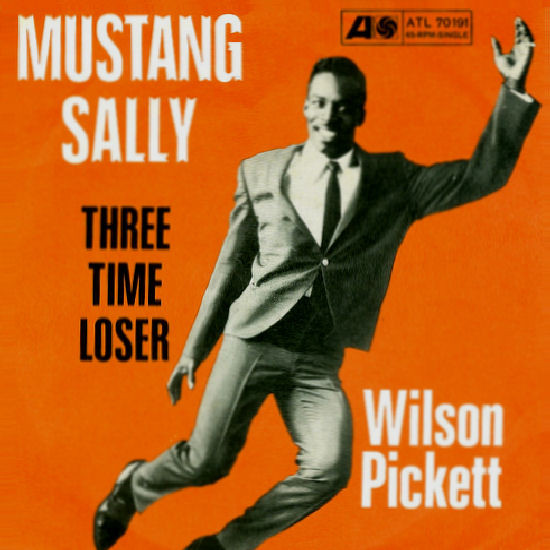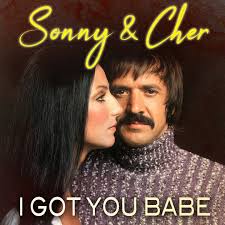 Donovan’s “Season of the Witch” is a song that has lingered in the collective consciousness of music lovers for decades, standing as both a hallmark of the 1960s folk-rock era and a precursor to the darker, more psychedelic directions that popular music would take in the years following its release. Emerging from Donovan’s 1966 album Sunshine Superman, the track diverges from his earlier, lighter folk-oriented material, venturing into an atmospheric realm that fuses moody lyricism, hypnotic rhythm, and a sense of impending mystique. From its opening notes, “Season of the Witch” establishes an eerie tension that feels simultaneously intimate and expansive, like a whispered secret amplified through the swirling mists of a dimly lit landscape. Donovan’s vocals are at once calm and detached, carrying a storytelling quality that draws listeners into the strange, unsettling world he paints. The guitar work underpins this mood with a simple yet hypnotic riff that cycles endlessly, creating the sensation of being caught in a time loop or wandering through a dreamscape, where every chord hints at both familiarity and the uncanny.
Donovan’s “Season of the Witch” is a song that has lingered in the collective consciousness of music lovers for decades, standing as both a hallmark of the 1960s folk-rock era and a precursor to the darker, more psychedelic directions that popular music would take in the years following its release. Emerging from Donovan’s 1966 album Sunshine Superman, the track diverges from his earlier, lighter folk-oriented material, venturing into an atmospheric realm that fuses moody lyricism, hypnotic rhythm, and a sense of impending mystique. From its opening notes, “Season of the Witch” establishes an eerie tension that feels simultaneously intimate and expansive, like a whispered secret amplified through the swirling mists of a dimly lit landscape. Donovan’s vocals are at once calm and detached, carrying a storytelling quality that draws listeners into the strange, unsettling world he paints. The guitar work underpins this mood with a simple yet hypnotic riff that cycles endlessly, creating the sensation of being caught in a time loop or wandering through a dreamscape, where every chord hints at both familiarity and the uncanny.
The song’s lyricism is enigmatic and evocative, weaving a tapestry of fear, suspicion, and uncertainty. Donovan’s words capture the zeitgeist of a decade steeped in social upheaval and experimentation, reflecting a culture simultaneously fascinated and terrified by change. Lines such as “When I look out my window, many sights to see / And when I look in my window, so many different people to be” articulate a tension between the external and internal worlds, between the observable and the subconscious, creating a psychological depth that enhances the song’s haunting quality. “Season of the Witch” does not rely on narrative clarity; instead, it thrives on suggestion and atmosphere, allowing listeners to project their own fears and curiosities onto its minimalist but potent framework. In doing so, it becomes more than a song—it becomes an experience, a portal into a shadowy, transformative space where folk storytelling meets the burgeoning sensibilities of psychedelic rock.
Musically, the track exemplifies Donovan’s unique ability to blend folk sensibilities with a brooding, rock-oriented edge. The guitar’s hypnotic strumming and the understated bassline set a steady, almost ritualistic pace, while the percussion maintains a subtle, insistent pulse that keeps the listener suspended in the song’s immersive atmosphere. There is a deliberate sparseness to the arrangement, which works to heighten the sense of mystery, giving each element space to breathe and resonate. The repetition of musical motifs reinforces the hypnotic, almost trance-like quality of the song, making it feel less like a traditional composition and more like an invocation, a musical spellcasting that draws the listener into its enigmatic orbit.
Donovan’s vocal performance is a study in understated intensity. He delivers each line with a calm, almost detached precision, which paradoxically amplifies the song’s tension. There is a laconic charm in his voice that belies the ominous undertones of the lyrics, creating a sense of duality that keeps the listener off balance. It’s a performance that requires subtlety: too much force would shatter the delicate spell of the arrangement, while too little would leave the song listless. Donovan navigates this balance with finesse, allowing the haunted, almost otherworldly atmosphere of the track to dominate without ever feeling forced or theatrical.
The thematic resonance of “Season of the Witch” lies in its ambiguity. It captures the anxieties of its era without anchoring them in specific events or personalities, which is part of its enduring appeal. The song can be interpreted in myriad ways: as a reflection on societal paranoia, as a meditation on personal alienation, or as an exploration of the unknown and the supernatural. This openness allows each generation of listeners to find new meanings within its lines, whether they approach it as a psychedelic relic of the 1960s or as a timeless meditation on uncertainty and transformation. The phrase “season of the witch” itself evokes cycles, change, and ritual, suggesting that the song is as much about a psychological or cultural state as it is about any literal figure or event.
“Season of the Witch” also showcases Donovan’s pioneering approach to integrating folk instrumentation with emerging electric and studio techniques. Though primarily an acoustic guitar-driven song, its layered textures and atmospheric production hint at the more adventurous studio experimentation that would come to define the late 1960s. There is a subtle echo and reverb applied to the vocals and instrumentation, which enhances the spectral, dreamlike quality of the track. These production choices were relatively forward-thinking for the time, signaling Donovan’s willingness to push the boundaries of folk music into more complex and immersive sonic territories. The song occupies a liminal space, bridging the gap between traditional folk storytelling and the psychedelic experimentation that would dominate the next few years of popular music.
The cultural impact of “Season of the Witch” has been extensive, influencing a wide range of artists across multiple genres. Its haunting chord progression and lyrical ambiguity have inspired covers, reinterpretations, and sampling in the decades since its release. Artists from rock, psychedelic, and even electronic genres have drawn on its eerie atmosphere and hypnotic rhythm to create new works, demonstrating the song’s adaptability and enduring relevance. Unlike many folk songs of its era, which remain rooted in their original context, “Season of the Witch” continues to resonate with contemporary audiences, in part because its themes are universal and timeless. Its influence is subtle yet pervasive, shaping the ways that musicians think about blending narrative, mood, and minimalistic instrumentation into something that feels simultaneously intimate and epic.
Live performances of the song have only amplified its mystique. Whether in Donovan’s own sets or through the interpretations of other artists, the hypnotic, cyclical nature of the music lends itself to an almost ritualistic experience in front of an audience. The repetition of the guitar motif and the measured pacing of the verses create a space where listeners can lose themselves, becoming participants in the atmospheric spell that Donovan originally cast in the studio. This communal aspect of performance further enhances the song’s reputation as a transformative piece, one that transcends the mere act of listening and becomes an immersive, almost meditative experience.
The enduring appeal of “Season of the Witch” also stems from its ability to straddle multiple identities. It is simultaneously a folk song, a rock track, a psychedelic experiment, and a cultural artifact of the 1960s. This multiplicity gives it a layered richness that rewards repeated listening, as each encounter with the track may reveal new textures, nuances, or emotional resonances. The song’s structure is deceptively simple, yet within that simplicity lies an expansive complexity: a hypnotic riff, understated percussion, and Donovan’s calm, enigmatic vocals converge to create a tapestry that is much larger than the sum of its parts.
Lyrically, the song taps into universal anxieties while maintaining a mystical, almost magical quality. Its imagery is suggestive rather than explicit, allowing listeners to project their own fears and interpretations onto the music. The repeated invocation of the “witch” evokes both danger and fascination, a duality that mirrors the human experience of confronting the unknown. The sense of suspense and ambiguity is heightened by the song’s consistent rhythm and cyclical melodic motifs, which create a feeling of being caught in a loop—an endless, mesmerizing observation of the strange, unpredictable nature of life and human relationships.
“Season of the Witch” exemplifies Donovan’s artistry in his ability to blend simplicity with depth, creating a song that is immediately captivating yet endlessly interpretable. Its restrained instrumentation and hypnotic pacing allow the emotional and psychological weight of the lyrics to emerge naturally, while its production choices amplify the sense of otherworldliness without ever overwhelming the listener. This balance between subtlety and intensity is key to the song’s enduring impact, making it a model for musicians seeking to create atmosphere and emotional resonance with minimalistic, thoughtful arrangements.
The song’s influence extends far beyond Donovan’s immediate audience. It has been used in film, television, and advertising to evoke a sense of mystery, nostalgia, or supernatural intrigue. Its unmistakable mood and cultural resonance make it a versatile tool for setting tone, whether in a dramatic cinematic moment or as a sonic nod to the 1960s counterculture. The track’s adaptability underscores its strength: it is a song that can be both historically anchored and contemporarily relevant, a rare quality in popular music.
Ultimately, “Season of the Witch” is a testament to Donovan’s vision and the power of music to create immersive emotional landscapes. Its hypnotic rhythm, enigmatic lyrics, and understated instrumentation coalesce into a song that is much more than its individual parts. It is a mood, a state of mind, and a reflection of the broader cultural currents of its time. The track continues to captivate listeners, inviting them to lose themselves in its cyclical, mystical embrace and to consider the intersection of fear, fascination, and transformation in both art and life.
Decades after its release, “Season of the Witch” remains a touchstone of folk-rock and psychedelic experimentation. It exemplifies the ways in which a simple musical idea—an arpeggiated guitar, a calm vocal delivery, and a compelling, repetitive rhythm—can evoke profound emotional and psychological resonance. Donovan’s work on this track demonstrates a mastery of atmosphere and storytelling, creating a song that is simultaneously specific to its time and timeless in its capacity to evoke intrigue, tension, and wonder.
The song endures because it engages listeners on multiple levels: intellectually, emotionally, and aesthetically. Its combination of hypnotic musical motifs, ambiguous lyricism, and immersive atmosphere creates a multi-sensory experience that rewards repeated engagement. “Season of the Witch” is a song that can be studied, interpreted, and appreciated from numerous perspectives, each offering new insights into its enduring power and cultural significance. Its ability to remain relevant, adaptable, and compelling over decades is a testament to Donovan’s artistic foresight and to the lasting appeal of music that embraces mystery, mood, and psychological depth.
In the final analysis, Donovan’s “Season of the Witch” is more than just a product of its time—it is a living, breathing artifact of musical imagination. Its hypnotic structure, enigmatic lyricism, and atmospheric instrumentation create a song that continues to captivate, inspire, and resonate with listeners of all generations. It is a masterclass in subtlety and psychological depth, demonstrating how minimalistic musical ideas can be transformed into emotionally and culturally significant art. By balancing simplicity with complexity, restraint with drama, and folk roots with psychedelic exploration, Donovan crafted a song that is as haunting as it is unforgettable, a true testament to the enduring power of music to capture the imagination and transport the listener into a world both familiar and strange.
“Season of the Witch” remains a high point in Donovan’s career and a defining moment in the evolution of 1960s folk-rock. Its hypnotic rhythm, enigmatic lyrics, and immersive atmosphere ensure that it continues to influence, inspire, and enthrall audiences today, proving that the power of music lies not only in technical skill but in its ability to evoke mood, stir the imagination, and create an enduring emotional resonance that transcends time, genre, and cultural context.


